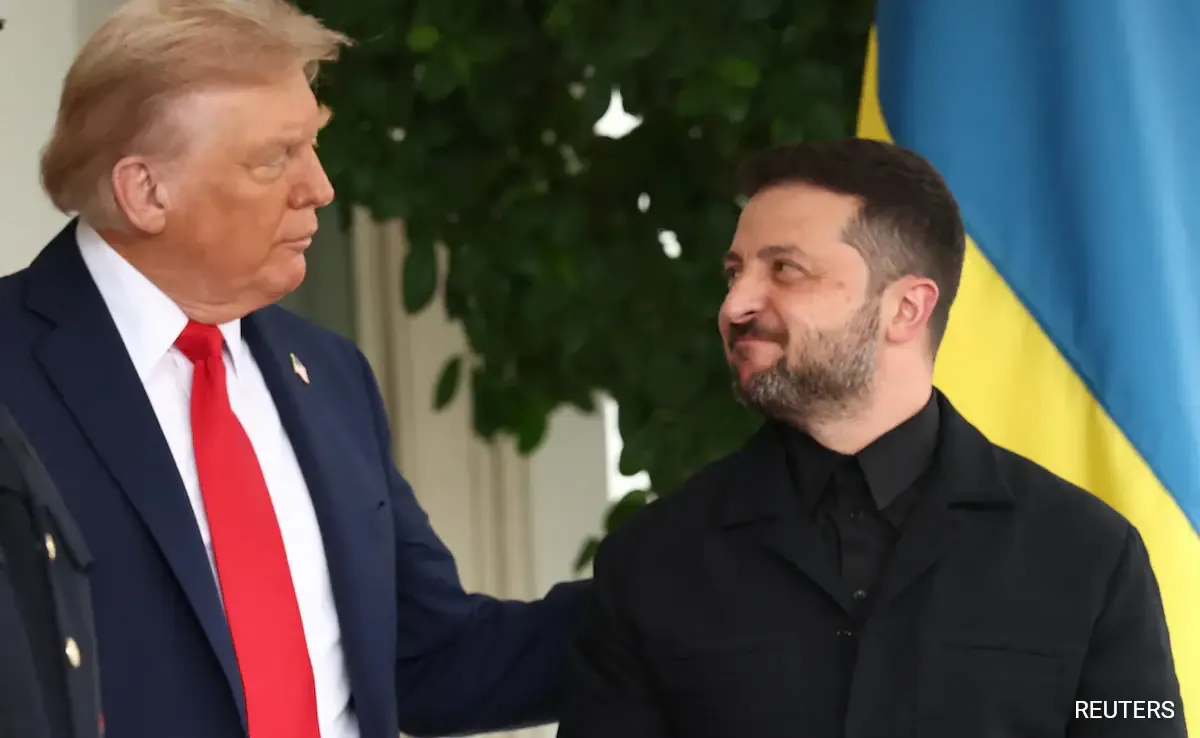In the luxurious walls of the White House, where history often writes its most complex chapters, the President of Ukraine Volodymyr Zelenskyy met with U.S. President Donald Trump on Monday, August 18, attempting to persuade the American leader of the necessity of firm support for Kyiv against Russian aggression. This meeting, taking place against the backdrop of fresh bloody attacks by Moscow on Ukrainian cities, highlighted deep disagreements on the path to peace: Trump, relying on his recent negotiations with Vladimir Putin, insists on territorial concessions from Ukraine, while Zelenskyy, backed by a coalition of European leaders, calls for joint pressure on the Kremlin to force Russia to retreat.
We have seen many diplomatic dramas—from the Cold War to modern geopolitical crises. Insider sources in the White House hint that Trump sees this meeting as an opportunity for a quick “big deal,” similar to those he promoted in business, but with risks to Ukraine’s sovereignty. His warm reception of Zelenskyy on the porch—an gesture reminiscent of old Hollywood films—contrasts with the heated discussion during their previous meeting in 2019, which led to Trump's impeachment over the Ukraine scandal. Today, however, the atmosphere seems more conciliatory: Zelenskyy delivered a letter to Melania Trump, and the press conference proceeded without scandals, with smiles and handshakes.
Answering journalists’ questions, Trump reaffirmed his previous statements that Zelenskyy “can end the war immediately if he wants.” “It’s true,” he said, adding that he plans a tripartite meeting with Russia, Ukraine, and the U.S., where there is “a good chance” of progress. He also mentioned his “very good” conversation with Putin in Alaska last week, where, according to sources close to negotiations, Trump rejected the idea of a ceasefire as a precondition for peace, instead proposing an “exchange of territories.” Specifically, Trump publicly advised Ukraine to abandon claims to Crimea and NATO membership—conditions Moscow has long demanded.
Meanwhile, Zelenskyy responded with compelling restraint, emphasizing that the war must be ended by Russia itself. “We hope that joint strength with America and European friends will force Russia to true peace,” he said, emphasizing the need for pressure rather than concessions. These words reflect deep concern in Kyiv: insiders from the Ukrainian government, with whom I spoke, fear that Trump, seeking a quick victory for his second term, might sacrifice Ukrainian interests for a deal with Putin. After the Alaska summit, Trump promised to “drive the peace process to the end, despite all my flippant and very jealous critics.”
Adding weight to this meeting, Zelenskyy did not arrive alone: alongside him in Washington were key European leaders—the United Kingdom’s Prime Minister Kír Starmer, German Chancellor Friedrich Merz, Italian Prime Minister Giorgia Meloni, Finnish President Sauli Niinistö, French President Emmanuel Macron, European Commission President Ursula von der Leyen, and NATO Secretary General Jens Stoltenberg. Before negotiations with Trump, Zelenskyy held consultations with some of these leaders, forming a united front. An extended discussion format is scheduled for later, after bilateral talks, where Europeans are likely to press Trump on security guarantees for Ukraine. According to American press reports, Trump, who previously refused such commitments, now considers supporting a “Coalition of the Willing”—European forces with American reinforcement.
This diplomatic carousel unfolds amid escalating violence: on the night before Monday, Russia struck Kharkiv, Zaporizhzhia, and Sumy, killing at least 10 people, including two children. Zelenskyy called these attacks “cynical,” aimed at undermining negotiations, and urged not to reward the aggressor. European leaders, like Macron, warned that weakness before Putin could provoke new conflicts in Europe.
In the White House corridors, whispers circulate that Trump plans to call Putin immediately after the meeting to “seal the deal.” But will this lead to genuine peace or to Kyiv’s capitulation? Insiders from the State Department I consulted are doubtful: without firm guarantees and sanctions, Moscow might just buy time. As history shows—from the Minsk agreements to today’s crisis—a peace without strength is an illusion. The world watches whether this meeting can rewrite Ukraine’s fate or become another chapter in the long saga of geopolitical compromises.


